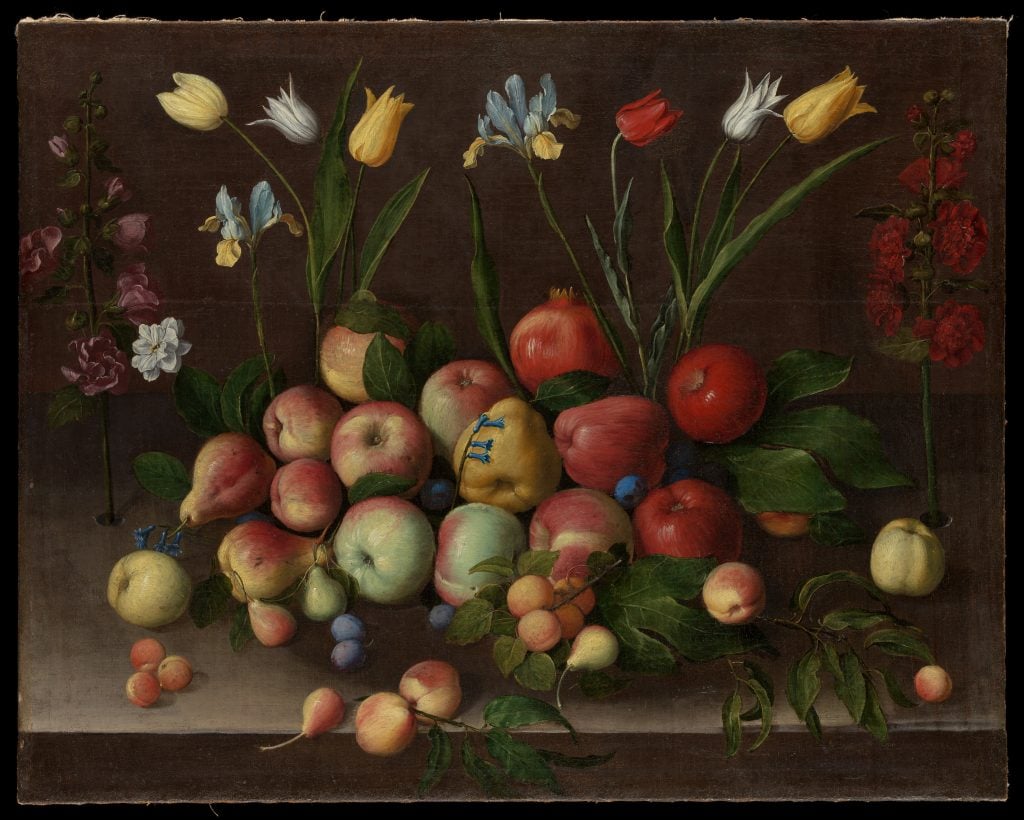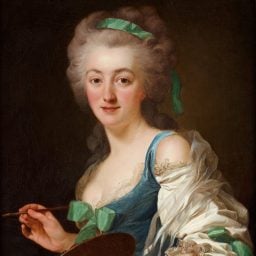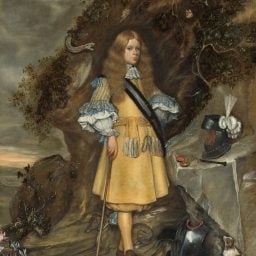Thanks to an unexpected bequest, New York’s Metropolitan Museum of Art now boasts the largest collection of works by the Mannerist painter and nun Orsola Maddalena Caccia (1596–1676) outside the artist’s native Italy.
Upon hedge-fund manager Errol M. Rudman’s death last year, he surprised the Met with a gift that included three works by Caccia, whose art is rarely represented in US museum collections—or even outside of the convent in Moncalvo, Italy, where she lived and worked.
“I knew next to nothing about her when the gift came to us,” David Pullins, the Met’s associate curator in the department of European painting, told Artnet News. “Obviously, it’s extremely exciting.”
Caccia’s father, Guglielmo Caccia, trained her as an artist and she went on to use her work to support her religious community. A convent was constructed as an extension of the family home and painting became an important part of its income.
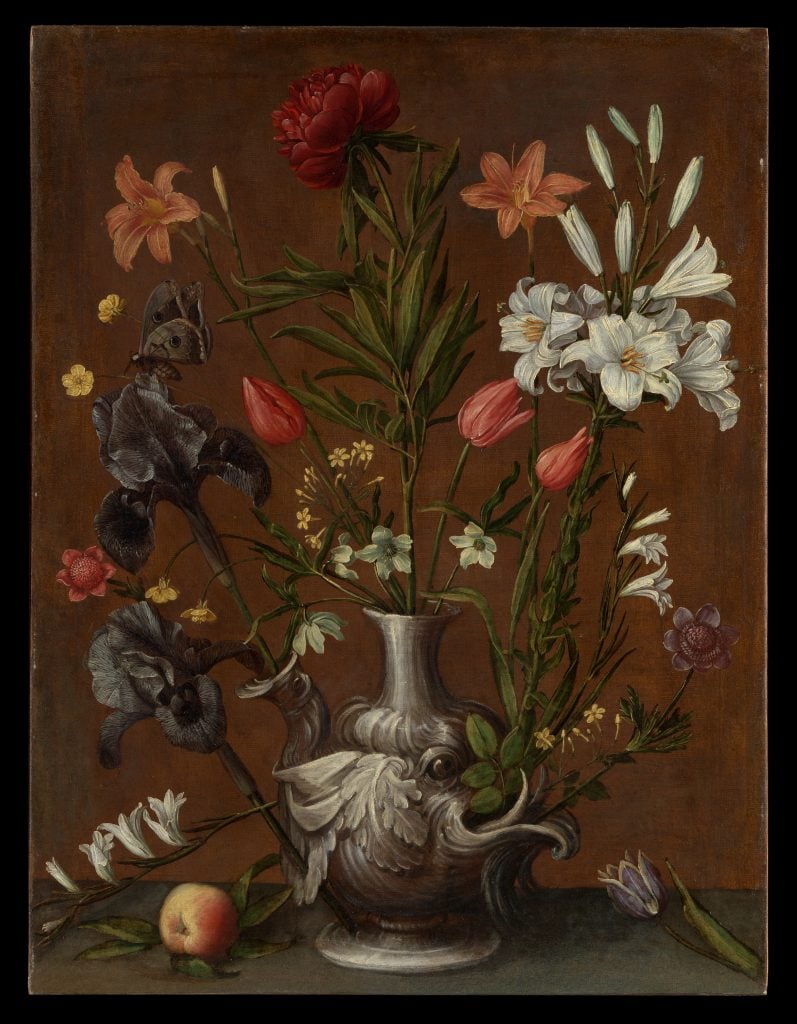
Orsola Maddalena Caccia, Flowers in a Grotesque Vase (c. 1635). Courtesy of the Metropolitan Museum of Art, New York, bequest of Errol M. Rudman.
Caccia’s work made something of a splash last May when a still life of birds set a record auction result of £212,500 ($264,350)—more than 14 times the pre-sale estimate. Nevertheless, the artist wasn’t exactly high on the Met’s shopping list, “because of the rarity of the works and the difficulty of attributing those work that do come on the market,” Pullins explained.
But her work falls in line with the Met’s goals to expand its holdings both of works by women artists and of still life paintings. The three donated pieces include two still lifes and one religious scene, as first reported by Art Herstory.
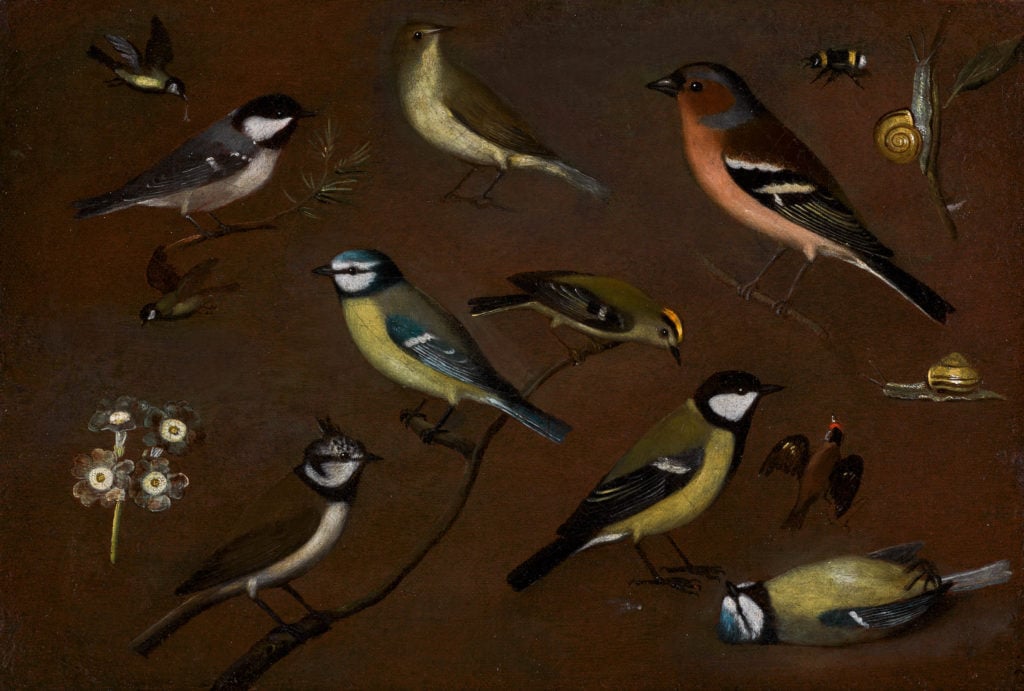
Orsola Maddalena Caccia, Still life of birds, including a marsh tit, chiffchaff, chaffinch, blue tits, goldrest, lapwing and a great tit. Courtesy of Sotheby’s London.
“The Rudman collection is really evidence of a focused kind of collecting that may not be in the multi-million-dollar category, but can absolutely help fill out the story of European painting,” Pullins said.
The two Caccia still lifes made their public debut at the Met in December. They are currently on view in “A New Look at Old Masters,” the newly reinstalled European paintings galleries at the top of the museum’s grand staircase.
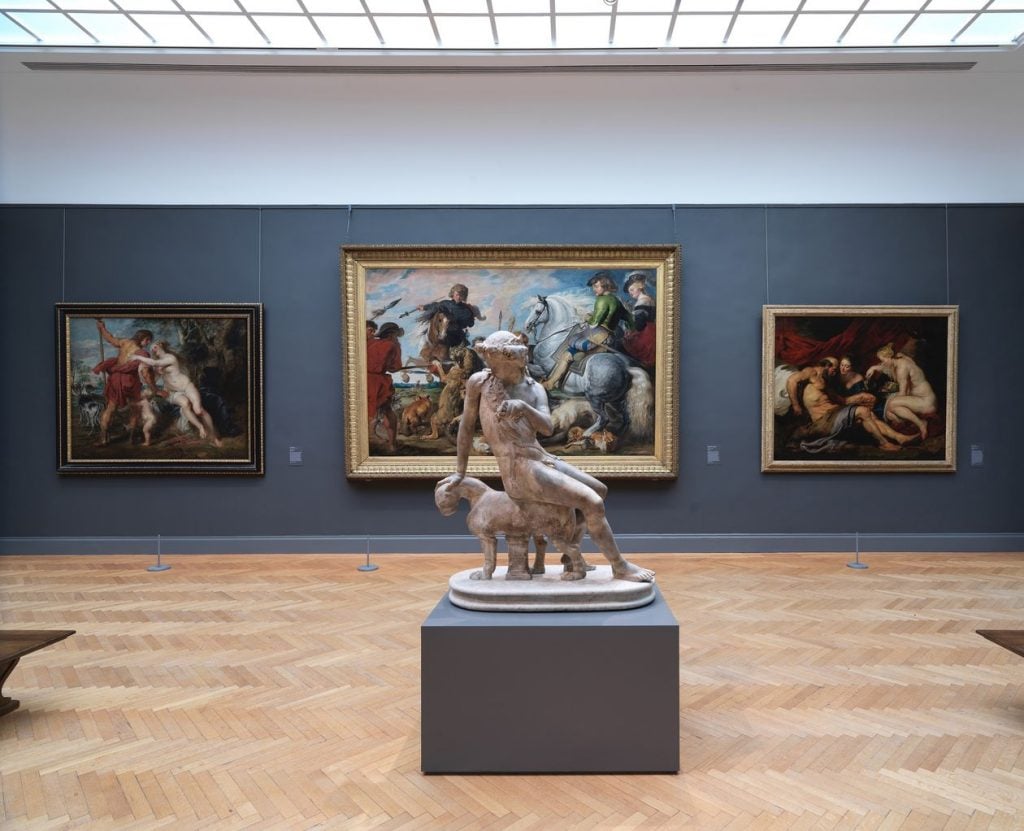
Installation view of “A New Look at Old Masters” at the Metropolitan Museum of Art. Photo courtesy of the Metropolitan Museum of Art.
This condensed presentation of works from the Met’s Old Master collection unveils the results of the first phase of a project to improve the museum’s natural lighting, and features Caccia—along with Bartolomeo Cavarozzi’s Basket of Fruit (1620), also donated by Rudman—on a wall dedicated to 17th-century still lifes.
Adding Caccia’s work to the display “helps to highlight the acquisition last year of a floral still life by Clara Peeters, a Flemish woman—a beautiful work, but intensely painted in a very different way,” Pullins said.
The two Caccia paintings are “textbook examples of her work,” he added. “Flowers in a Grotesque Vase is everything that she does—this very meticulous individuation, treating each strand of flowers independently. It results in this very graphic abstract reduction of form. That is part of the reason that her work appeals to a contemporary aesthetic.”
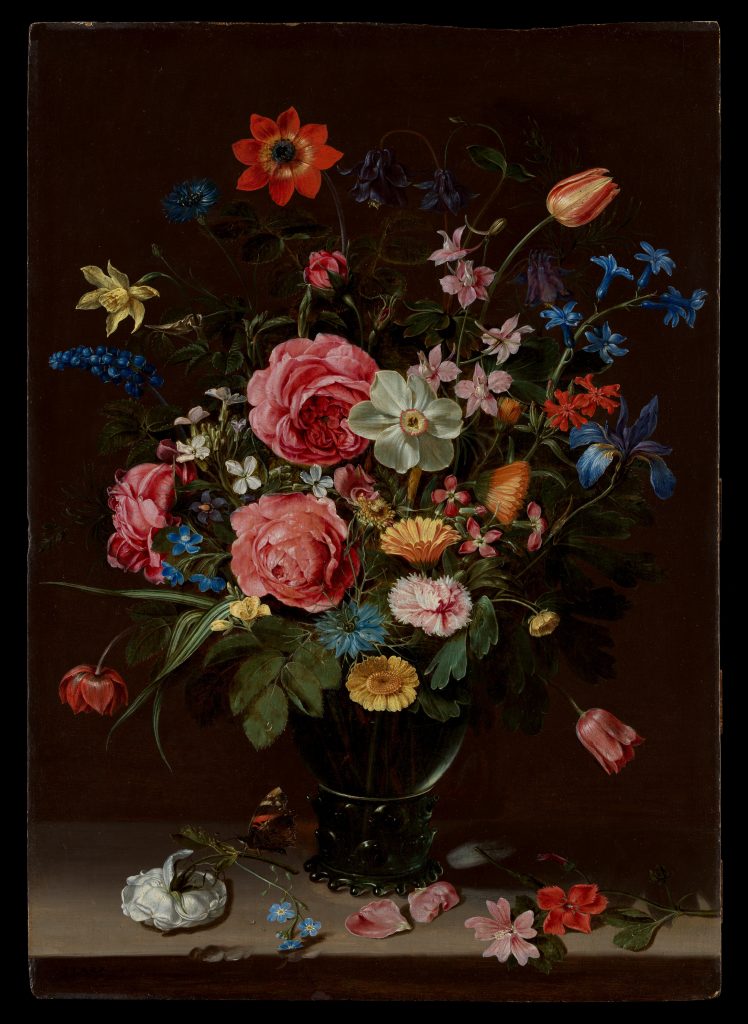
Clara Peeters, A Bouquet of Flowers (c. 1612). Courtesy of the Metropolitan Museum of Art, purchase, Lila Acheson Wallace, Howard S. and Nancy Marks, Friends of European Paintings, and Mr. and Mrs. J. Tomilson Hill Gifts, Gift of Humanities Fund Inc., by exchange, Henry and Lucy Moses Fund Inc. Gift, and funds from various donors.
Still life, of course, was historically one of the more common genres for early women painters, who were typically denied access to live models and formal training alongside male students. Scholars now believe that, like many other women artists of the era, Caccia has had a significant number of her works misattributed to men—which partially accounts for their rarity.
That includes the Met’s third Caccia work, Madonna and Child with the Infant Saint John the Baptist (c. 1625), previously thought to be the work of her father. Part of the confusion stems from the fact that “she was probably reusing drawings and designs by her father for the figures,” Pullins said. But the painting’s many still life elements, especially the goldfinch and the profusion of flowers—Caccia’s trademark—point compellingly to her hand.
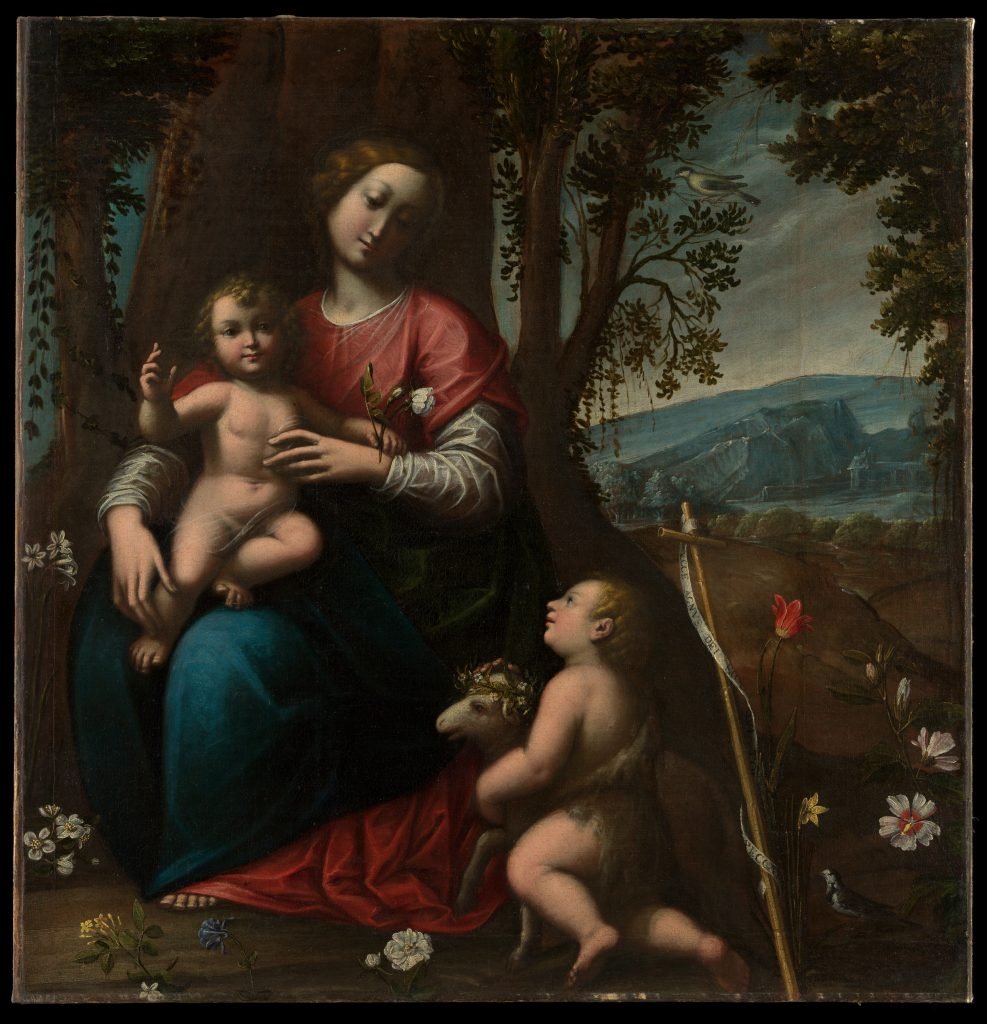
Orsola Maddalena Caccia, Madonna and Child with the Infant Saint John the Baptist (c. 1625). Courtesy of the Metropolitan Museum of Art, New York, bequest of Errol M. Rudman.
Despite the relatively small number of known paintings by Caccia, the artist’s work is relatively well-documented compared to that of some of her female contemporaries—even within the Moncalvo convent.
Art historians have found that two sisters, for instance, were allowed to enter religious life with a reduced dowery “because they were sufficiently talented in painting and it looked like they would help the income of the convent,” Pullins said.
“There are a number of artists in the period where we know that a daughter or a sister was a painter. We know it archivally, but it’s very hard—if not impossible—to attribute works to them,” he added, citing Caccia’s contemporary Lucrina Fetti, a nun and sister of artist Domenico Fetti, for whom no known works have been definitively identified.
As the art world looks to uncover the careers and artistic output of these forgotten female Old Masters, the surge of interest in their work has led to a shift in the art market. Pop star and fashion designer Victoria Beckham has even been helping Sotheby’s promote the category at auction.
Now, Caccia’s canvases may be the most significant of the Rudman bequest, rather than a small-scale copper work The Flight Into Egypt (c. 1664) by Carlo Maratta. “Twenty years ago, the Carlo Maratta would have been the knock out. He was a very important Baroque artist working in Rome, and we had no works by him,” Pullins said.
Today, works by early women painters are among the most sought after by the Met, which is looking to continue building on a foundation that includes one work by Margaretha Haverman (c.1693–c. 1739), one by Artemisia Gentileschi (1593–1652), a pair of pastels by Rosalba Carriera (1673–1757), at least three Luisa Roldán (1652–1706) sculptures, and a newly attributed Lavinia Fontana (1552–1614).
When it comes to Old Master donations now, “marketwise,” Pullins said, “one would much prefer it be by a woman.”
